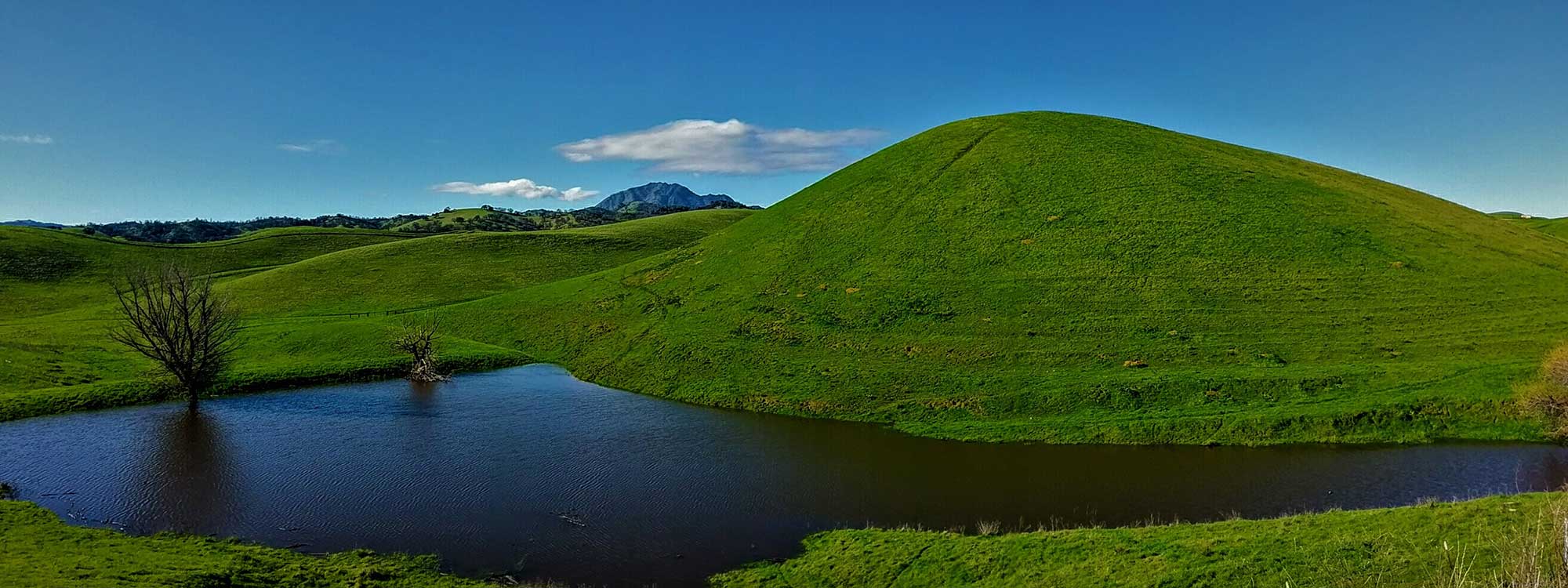August 28 marks a major win for Greenbelt Alliance and the entire Bay Area. That evening, the Antioch City Council voted 3-1 to adopt our “Let Antioch Voters Decide Initiative,” preventing sprawl development on 1,200 acres of threatened natural and agricultural lands in the foothills of Mount Diablo in the East Bay. The move also renews the city’s expiring urban limit line—which defines where the city can and cannot expand—in perpetuity. This victory is a wonderful sign of the Bay Area’s dedication to conservation and smart growth solutions.
The adoption of this measure is the culmination of many years of work by Greenbelt Alliance and our partner organizations, alongside hundreds of Antioch residents, and shows what strong community engagement, organizing, and advocacy can achieve.
The Long, Arduous Road to Protection
The newly protected lands are located in the Sand Creek area at the southern edge of Antioch, in the foothills of Mount Diablo. Known for its majestic rolling hills and open expanses, the area provides a host of natural benefits, including critical wildlife habitat, recharge of groundwater supplies, carbon sequestration, and well-loved walking routes and scenic vistas. The area abuts two beloved East Bay Regional Park District properties—Black Diamond Mines Regional Park and Deer Valley Regional Park.
Unfortunately, the Sand Creek area has long been threatened by sprawl development, with city plans envisioning up to 4,000 housing units. Most recently, Richland Communities had proposed 1,667 housing units on 551 acres, including sensitive lands along Sand Creek, in a hotly contested project known as “The Ranch.”
To address these ongoing threats, Greenbelt Alliance, in partnership with Save Mount Diablo, Sierra Club, California Native Plant Society, and a large, diverse coalition of Antioch residents, developed the “Let Antioch Voters Decide: Sand Creek Area Protection Initiative.” This measure was designed to:
- Prevent large-scale development on 1,800 acres of the Sand Creek area
- Require Antioch voter approval to allow more intensive development
- Permanently require voter approval of amendments to the city’s urban limit line
We and our partners then mobilized over 150 volunteers to build support for our measure. Together, we gathered more than 9,000 signatures, far exceeding the minimum number required to qualify the measure for the ballot.
As our campaign grew, Richland realized that they had underestimated the community’s concerns about sprawl development in the Sand Creek area. Faced with a major community mobilization, the company created its own competing ballot measure. That measure copied many provisions of our initiative while allowing a slimmed-down version of its own project, with fewer units, a wide creek-corridor buffer around Sand Creek, and areas with higher biodiversity left undeveloped. This measure also qualified for the ballot, and in July, the Antioch City Council adopted it.
While we would have far preferred to not face a competing measure, even the Richland Initiative was an important step forward, ensuring increased protection for more than 1,200 acres of open space that had long been in the crosshairs for sprawl development. These lands never would have been considered for protection without the intense community pressure developed by our coalition.
As with our measure, the Richland measure also substantially increased local environmental protections by requiring voter approval for any future changes to the city’s urban limit line.
Establishing a permanent urban limit line is particularly important for shaping local growth patterns. The Antioch Limit Line was set to expire in 2020, so renewing the line was essential for retaining existing protections on nearby natural and agricultural lands. In addition, many urban limit lines must be renewed every 20-30 years, which is costly and time-intensive and creates new uncertainties as the expiration date approaches. By shifting the burden onto those proposing to change the line, the whole community can breathe a sigh of relief.
What’s Next
We’re grateful to everyone who worked with us over many years to protect these lands for future generations and we’re glad that the majority of the City Council wisely recognized the thousands of Antioch voters who wanted to see our measure adopted.
We hope that the City now begins to shift its attention to encouraging the right development in the right places—for example, fostering new homes for residents across the income spectrum near the recently opened Antioch Hillcrest BART station to create thriving, inclusive transit-oriented communities. These development patterns will use our limited natural resources like water and energy more efficiently, provide more equitable access to our public infrastructure investments, and increase resilience to the increasing wildfires, floods, and fires of a changing climate. And they’ll bring new energy and excitement to the Antioch community while protecting our land, water, and air for all to enjoy.
Photo: Michael Amorosa




